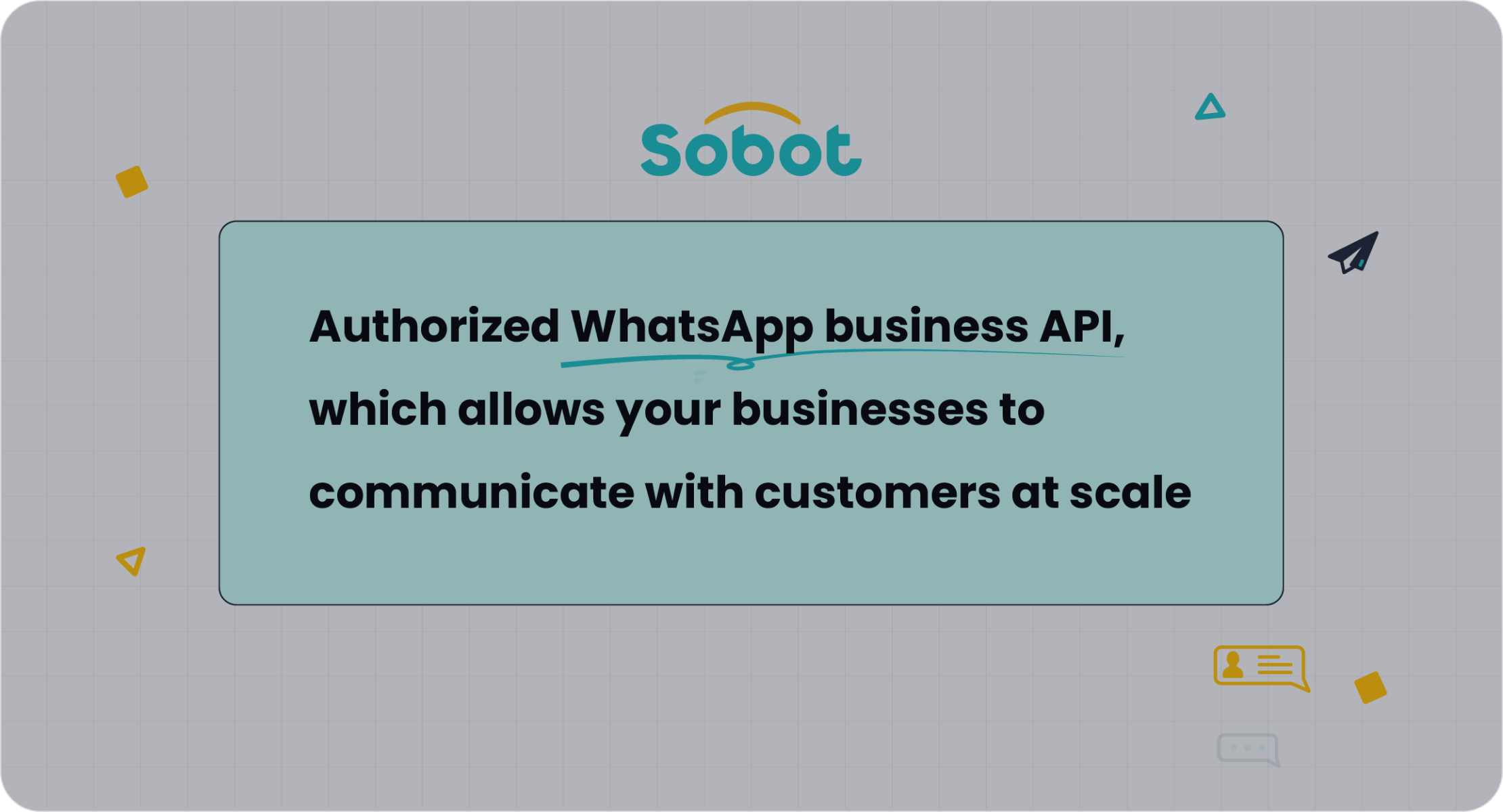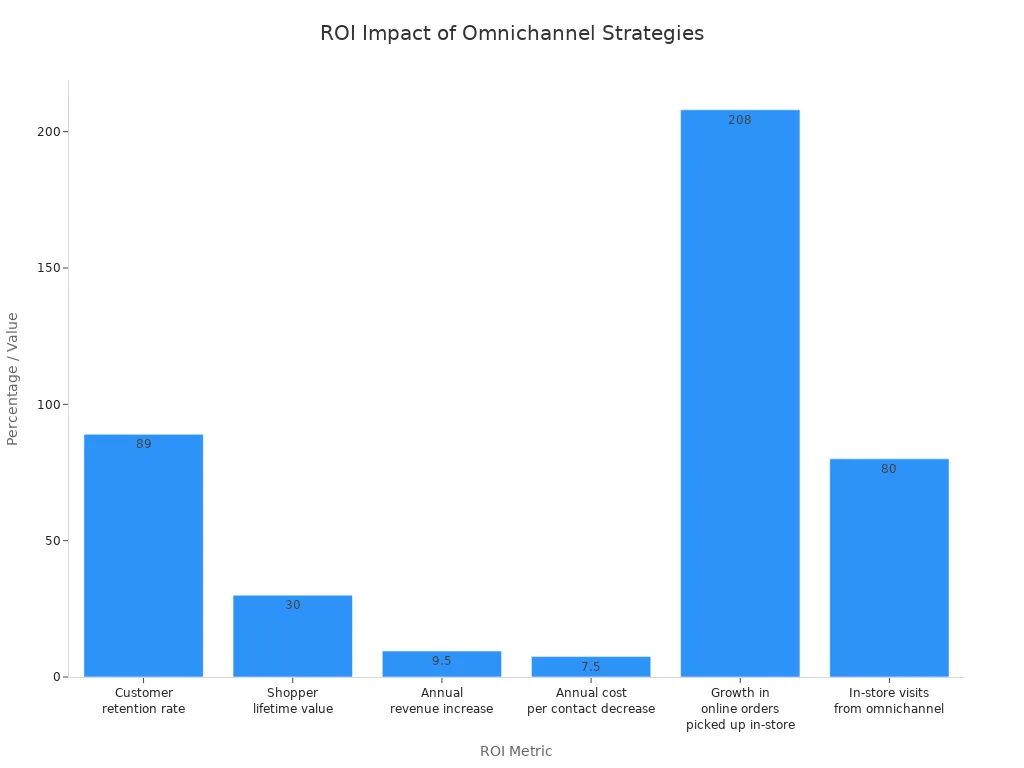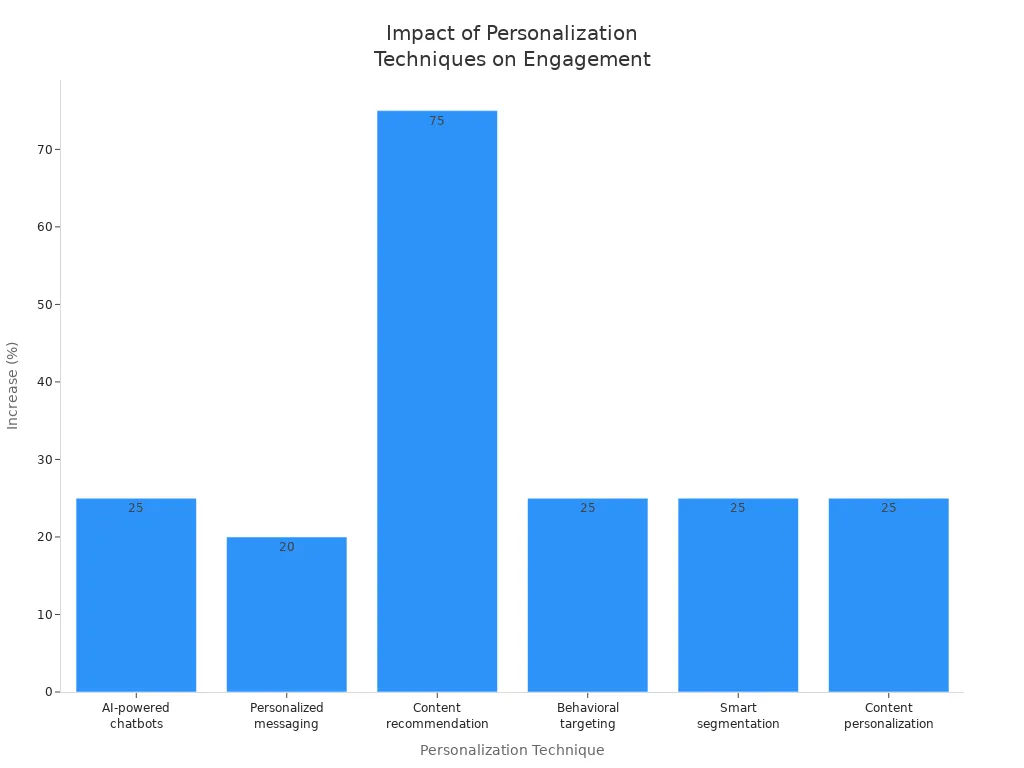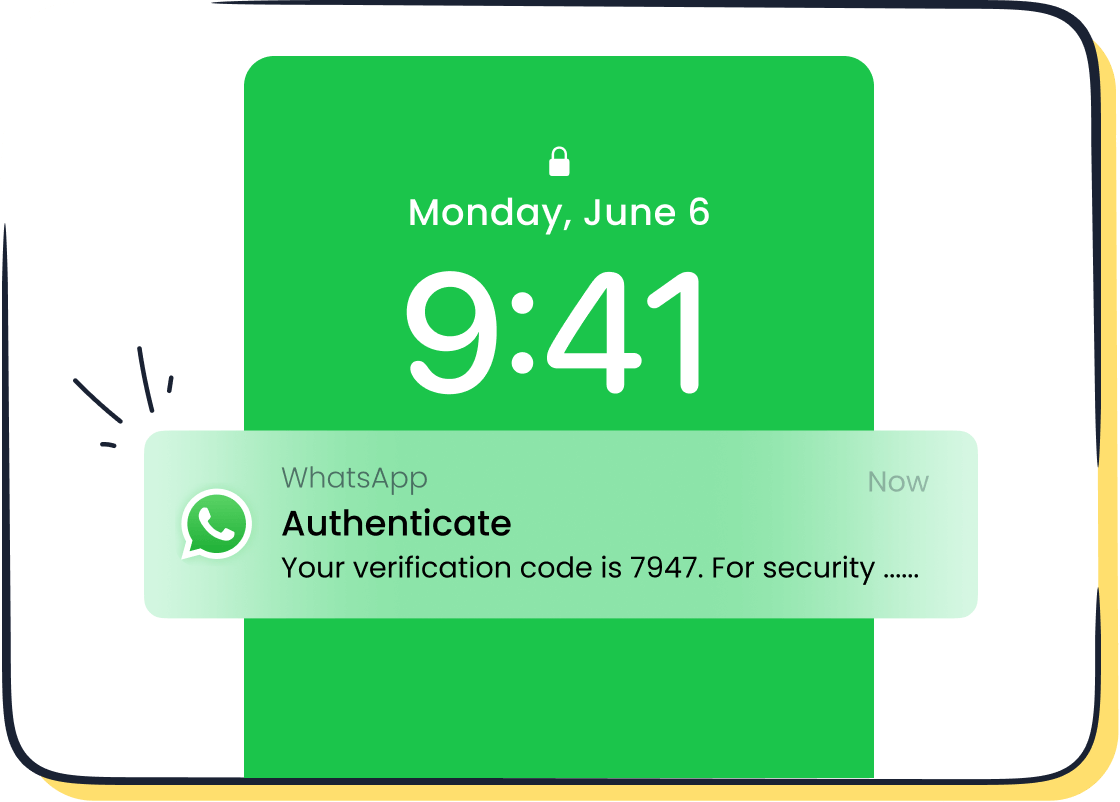Unlock Omnichannel Success with the Right Platform Tips

You want your business to stand out, right? A successful omnichannel strategy begins with choosing the right omnichannel platforms and following proven steps for exceptional customer support. Today’s customers expect a seamless experience whether they shop online, in-store, or on mobile devices. Businesses leveraging Sobot’s omnichannel platforms see customer satisfaction soar to around 92%. Powered by Sobot AI, Sobot’s all-in-one platform delivers advanced omnichannel support that keeps you ahead of trends like personalization and flexible shopping journeys. Discover how the Sobot call center solutions make customer support smarter, more efficient, and truly customer-centric.
Aspect Sobot Highlights Omnichannel Unified channels, AI, analytics, strong support, trusted by top brands Support 24/7 omnichannel support, fast response, reduced workload, increased customer satisfaction
Omnichannel Strategy Basics
Omnichannel vs. Multichannel
You might hear people talk about omnichannel and multichannel strategies like they mean the same thing. They don’t. Let’s break it down with a simple table:
| Aspect | Omnichannel Strategy | Multichannel Strategy |
|---|---|---|
| Messaging | Integrated, uniform messaging across all channels | Independent messaging per channel |
| Personalization | Customer-level personalization using real-time data | Channel-specific personalization |
| Customer Focus | Customer-centric, meets customers wherever they engage | Business-centric, focuses on expanding reach via selected channels |
| Customer Experience | Seamless, unified, smooth experience across touchpoints | Fragmented experience, disconnected across channels |
| Execution Effort | Requires complex infrastructure and adaptive ecosystem | Relatively straightforward, low-effort implementation |
| Example Brand | H&M uses omnichannel to create coordinated campaigns across email and push notifications | Walmart uses multichannel to reach customers via app, website, and stores |
Omnichannel platforms connect all your channels into one smooth system. You give your customer a single, connected journey. With multichannel, you use many channels, but each one works alone. This can make the customer experience feel choppy. Omnichannel marketing focuses on integrating multiple channels, so your customer never feels lost or has to repeat themselves.
Business Value
When you use an omnichannel strategy, you put your customer at the center. You see things from their point of view. This approach builds stronger relationships and keeps customers coming back. Companies like Nike, Netflix, and Starbucks show how powerful this can be. Their customers get a unified experience, whether they shop online, use an app, or visit a store.
Here’s what you can expect from a strong omnichannel strategy:
- Improved customer loyalty and repeat business
- Higher sales conversion rates and more revenue
- Better customer retention and brand recall
- Increased engagement across all channels
- Smarter use of data for personalized marketing
Studies show that omnichannel customers have a 30% higher lifetime value than single-channel customers. They are also 3.6 times more likely to make extra purchases. You can see the impact in the numbers below:

Retailers using omnichannel platforms see a 287% higher purchase rate and an 89% customer retention rate compared to those with weak engagement. That’s why so many businesses now invest in omnichannel strategies to boost their marketing and customer experience.
Mapping the Customer Experience

Customer Journey Steps
When you want to create a great omnichannel experience, you need to understand the customer journey. Think of it as a story your customer goes through with your brand. Each step matters. Here’s how most successful companies map out the journey:
- Awareness: Your customer first discovers your brand. This can happen on social media, through ads, or by searching online.
- Consideration: Now, your customer starts comparing options. They read reviews, check your website, and maybe ask friends.
- Purchase: The customer decides to buy. They might use your app, website, or even visit your store. A seamless customer journey here makes a big difference.
- Onboarding: After buying, your customer learns how to use your product or service. Good support here enhances customer experience.
- Retention: You keep in touch with your customer. Personalized offers and helpful tips help them stay loyal.
- Delight: You go the extra mile. Surprise rewards or amazing service turn customers into fans who tell others about you.
You can spot pain points by looking at each step. When you fix these, you start building better customer experiences.
Touchpoints and Segments
Every time a customer interacts with your brand, that’s a touchpoint. These can be your website, app, emails, social media, or even a phone call. Mapping these touchpoints helps you see where the customer experience can improve.
To get the most from your omnichannel strategy, follow these steps:
- Define your customer segments. Group people by what they like, how they shop, or where they live.
- Collect data from every channel. Use tools to see the full picture of each customer.
- Identify all touchpoints. List every place your customer connects with you.
- Use AI and analytics to spot trends and personalize the journey.
- Test and adjust. Try new things and see what works best for each segment.
| Component | Description |
|---|---|
| Consistency | Give the same feel and message on every channel. |
| Optimization | Make each channel work best for its device and context. |
| Seamlessness | Let customers move easily between channels. |
| Orchestration | Guide customers with personal touches at every step. |
| Collaboration | Get your teams working together for a smooth experience. |
When you map touchpoints and segment your audience, you create an omnichannel approach that enhances customer experience and keeps people coming back.
Setting Omnichannel Goals
Setting clear goals is the first step to a successful omnichannel strategy. You want every team member to work toward the same vision. When you align your teams and track the right metrics, you build a strong foundation for customer satisfaction and business growth.
Team Alignment
You can’t achieve a successful omnichannel strategy without teamwork. Everyone needs to understand the plan and their role in it. Here are some best practices to help your teams stay on track:
- Set clear, measurable goals that match your business objectives.
- Monitor customer feedback from surveys, reviews, and social media.
- Use data to find strengths and weaknesses in your strategy.
- Review performance data with your team often. Celebrate wins and fix problems together.
- Make changes based on what the data shows. Stay flexible and ready to adapt.
- Keep your strategy agile as customer preferences and the market change.
Tip: Use technology like CRM systems and marketing automation tools. These help your sales, marketing, and customer service teams see the same customer journey and work together better.
You can also boost alignment by:
- Creating a unified omnichannel strategy for sales and marketing.
- Sharing customer journey data across teams for more personal interactions.
- Standardizing technology platforms to avoid confusion.
- Defining clear roles and responsibilities for everyone.
When you follow these best practices, you break down silos and improve customer service. Your teams will deliver a seamless experience across every channel.
Success Metrics
You need to measure your progress to know if your omnichannel marketing works. The right metrics show where your strategy shines and where you can improve. Here are some key metrics to track:
- Customer Lifetime Value (CLV): Shows how much revenue each customer brings over time.
- Conversion Rate: Tells you how many users take the action you want, like making a purchase.
- Customer Acquisition Cost (CAC): Measures how much you spend to get a new customer.
- Return on Investment (ROI): Checks if your marketing campaigns make a profit.
- Engagement Rate: Looks at how much customers interact with your content.
- Customer Retention Rate: Tracks how many customers stay with you over time.
- Customer Satisfaction Score (CSAT): Directly measures customer satisfaction.
- Net Promoter Score (NPS): Shows how likely customers are to recommend you.
Note: Tracking these metrics helps you improve customer retention, boost satisfaction, and grow sales. You can spot trends, fix weak spots, and celebrate your wins.
A successful omnichannel strategy uses these metrics to guide every decision. When you focus on customer satisfaction and retention, you set your business up for long-term success.
Choosing Omnichannel Platforms
When you want to deliver the best customer experience, you need to choose the right omnichannel platforms. Not all platforms are the same. Some only connect a few channels. Others, like Sobot, bring everything together and make your support smarter, faster, and more personal.
Sobot’s Unified Solution
You want your customers to reach you on any channel they like—chat, email, voice, or social media. Sobot’s unified solution makes this possible. You get one platform that connects all your channels. This means you can offer seamless omnichannel support without switching between tools.
Sobot stands out because it uses advanced AI and automation. The Five-AI system covers every part of the customer journey. You get:
- Omnichannel AI that works across all channels.
- Scenario-based AI for e-commerce, retail, and more.
- Multi-faceted AI that helps customers, agents, and admins.
- Generative AI for smarter replies and fewer mistakes.
- Secure AI that keeps your data safe and meets global privacy rules.
Sobot’s AI does more than just answer questions. It helps you with sales, marketing, and support. You can automate replies, route chats to the right agent, and even get insights to improve your service. This makes your team more efficient and your customers happier.
Let’s look at how Sobot compares to other omnichannel platforms:
| Feature | Sobot | Other Platforms |
|---|---|---|
| Channel Coverage | Chat, email, voice, WhatsApp, social | Often limited to chat or email |
| AI Capabilities | Five-AI system, scenario-based, generative | Basic chatbots or simple AI |
| Automation | Advanced, covers sales and support | Limited automation |
| Security | Global compliance, data encryption | Varies |
| Integration | Easy with CRM, e-commerce, and more | Sometimes complex |
| Experience | 10+ years, trusted by top brands | Varies |
Opay, a leading financial service platform, switched to Sobot’s omnichannel support. They saw customer satisfaction jump from 60% to 90%. Their costs dropped by 20%, and conversion rates went up by 17%. Sobot helped Opay manage all customer interactions in one place and made their support team more productive.
Integration and Data
You want your omnichannel support to work with your current business systems. Sobot makes integration simple. You get a flexible SDK, clear documentation, and ready-to-use APIs. This means you can connect Sobot to your CRM, e-commerce, or other tools without hassle.
Here’s what you should look for when you select the right omnichannel support solution:
| Evaluation Criteria | Why It Matters | Example Benefit |
|---|---|---|
| Automation | Handles many touchpoints and fast-changing needs | Saves time, reduces errors |
| AI-driven Capabilities | Personalizes offers and timing using real-time data | Boosts conversions and customer satisfaction |
| Personalization & Segmentation | Understands each customer and tailors campaigns | Higher engagement and loyalty |
| Integration with Multiple Channels | Keeps data flowing and customer profiles unified | No more fragmented experiences |
| Real-time Reporting | Gives instant feedback on performance | Lets you adjust quickly for better results |
| Ease of Use | Makes it simple for your team to manage support | Faster onboarding and less training needed |
| Cohesive Customer Experience | Ensures every channel feels connected | Customers never have to repeat themselves |
| Customer-centricity | Focuses on what your customers want | Drives retention and satisfaction |
| Hyper-personalization | Delivers the right message at the right time | Meets high customer expectations |
Sobot’s platform checks all these boxes. You can automate tasks, personalize every interaction, and keep your data safe. The system supports high volumes, so you can grow your business without worry.
When you integrate Sobot, you should:
- Make sure your data stays consistent and secure. Use encryption and follow privacy rules.
- Pick the best integration method for your needs. APIs work well for cloud apps.
- Break the process into steps. This helps you spot problems early.
- Test everything before you go live. Check that all channels and systems work together.
- Keep an eye on performance. Use analytics to see what works and make changes as needed.
Tip: Sobot’s omnichannel support lets you switch between channels without losing context. Your customers get a smooth journey, and your team always has the full picture.
With Sobot, you get more than just a tool. You get a partner that helps you deliver top-notch omnichannel support, boost sales, and keep your customers coming back.
Omnichannel Support and Automation
Automation Tools
You want your business to respond fast and keep customers happy. Automation tools make this possible in omnichannel support. These tools help you manage all your channels—chat, email, voice, and social media—without missing a beat. When you use automation, you save time, reduce errors, and give your team more freedom to focus on complex customer service needs.
Let’s look at what makes automation tools so powerful for omnichannel support:
- You can handle high volumes of requests across different locations and departments.
- Security and compliance features keep your customer data safe.
- You get to customize workflows, dashboards, and automated responses to fit your business.
- Real-time reporting and analytics show how your support team performs.
- A unified agent workspace brings all your channels together in one place.
- Automated workflows and ticketing systems assign and route inquiries quickly.
- Self-service knowledge bases help customers solve problems on their own.
- AI-powered chatbots answer routine questions 24/7 and qualify leads.
- Intelligent routing connects customers with the right support agent.
- Integrations with eCommerce and business tools keep your customer data unified.
Here’s a quick comparison of popular automation tools for omnichannel support:
| Tool Name | Key Automation Features | Pros | Cons | Primary Audience |
|---|---|---|---|---|
| HubSpot Service Hub | Unified inbox, CRM automation, reporting | Integrates multiple channels, powerful CRM | Limited advanced customization, higher cost | Mid to large B2B companies |
| Zendesk | AI-powered chatbots, ticket routing, multichannel integration | Seamless channel integration, scalable | Steep learning curve, expensive advanced features | Enterprises and growing mid-sized businesses |
| Salesforce Service Cloud | AI-driven predictive analytics, automation | Comprehensive integration, customizable dashboards | High cost, complex setup | Large enterprises using Salesforce |
| ServiceNow | Workflow automation, AI capabilities, analytics | Unified platform, service optimization | High cost, requires customization | Large enterprises with complex needs |
| Freshdesk | Automation features, multi-channel support | Easy to use, cost-effective | Limited advanced features | Small to mid-sized businesses |
| Zoho Desk | AI ticket classification, response suggestions | Consolidates channels, analytics | Challenging third-party integration | Small to mid-sized businesses using Zoho |
| Intercom | Automation bots, live chat, in-app messaging | Robust automation, detailed reporting | Expensive at scale, limited beyond messaging | Tech-savvy startups and mid-sized businesses |
| Genesys Cloud | AI bots, workforce management, performance analytics | Integrates voice, chat, email, social media | High cost, complex setup | Large enterprises with extensive support needs |
| LiveAgent | Ticket routing automation, SLA management | Combines multiple channels, real-time monitoring | Outdated UI, limited advanced features | Small to mid-sized businesses |
| Kustomer | AI automation, customizable workflows | Unified platform, contextual customer views | Higher cost, setup complexity | Mid to large businesses seeking advanced automation |
You might wonder how automation impacts your response times and customer satisfaction. Here’s what happens when you use the right tools for omnichannel support:
- Centralized dashboards let your agents manage all channels in one place. This cuts down on time spent switching between systems.
- AI chatbots give instant answers to simple questions. Your human agents can then focus on more complex customer service issues.
- Real-time syncing means updates show up everywhere at once. Customers never have to repeat themselves.
- Self-service options, like FAQs and knowledge bases, let customers solve problems on their own.
- Automation handles high-volume inquiries during busy times. Your response times stay fast, even when things get hectic.
- Automated processes speed up returns, refunds, and scheduling.
- You see 37% faster first response times and 52% quicker issue resolution.
- Automation leads to 27% fewer tickets per order and 36% more repeat purchases.
- Quick responses keep customers satisfied and loyal.
Tip: The best practices for omnichannel support always include automation. You get faster service, happier customers, and a team that can focus on what matters most.
Sobot’s omnichannel support platform brings all these automation benefits together. You get AI-powered chatbots, smart routing, and a unified workspace. Your team works smarter, not harder, and your customers notice the difference.
Personalization
Personalization takes your omnichannel support to the next level. You want every customer to feel special, no matter which channels they use. When you personalize your support, you boost engagement, increase sales, and build loyalty.
Let’s explore some proven personalization techniques for omnichannel support:
| Personalization Technique | Description | Proven Impact / Metrics | Example Companies |
|---|---|---|---|
| AI-powered chatbots | 24/7 customer support across multiple channels | 25% increase in customer satisfaction; 30% automation of queries; 90% first-contact resolution | SuperAGI |
| Personalized messaging | Targeted promotions based on purchase history and behavior | 15-25% increase in sales | Starbucks |
| Content recommendation | Suggesting relevant products/services based on browsing and purchase behavior | 75% increase in user engagement | Amazon, Netflix |
| Dynamic interfaces | Real-time adjustment of website/app layout and content based on user behavior | Significant increase in engagement | Netflix |
| Behavioral targeting | Delivering targeted content/offers based on user behavior analytics | 25% increase in sales | Starbucks |
| Customer journey mapping | Visualizing customer journey to identify improvement areas | Improved retention and satisfaction | SuperAGI |
| Smart segmentation | Grouping customers by demographics, behavior, purchase history for targeted campaigns | 20-30% increase in conversion rates | SuperAGI |
| Timing optimization | Sending messages at optimal times based on customer preferences | Increased message receptivity | Various |
| Content personalization | Personalized email subject lines, SMS, call scripts tailored to individual needs | 25% increase in customer satisfaction | Various |
| Proactive outreach | Engaging potential customers before they reach out | Increased engagement and loyalty | Various |
| Integration with CRM | Using customer data to tailor omnichannel outreach | Enhanced personalization and engagement | Various |
| Real-time analytics | Monitoring customer behavior to adjust strategies dynamically | Improved operational efficiency and engagement | Various |

You can see that personalization drives real results. AI-powered chatbots, for example, can handle 30% of queries automatically and achieve a 90% first-contact resolution rate. Personalized messaging and behavioral targeting lead to higher sales and more loyal customers.
Here’s how you can use personalization in your omnichannel support:
- Use AI chatbots to greet customers by name and remember their preferences.
- Send targeted offers based on what customers have bought before.
- Recommend products or services that match each customer’s interests.
- Adjust your website or app in real time to fit each customer’s behavior.
- Group customers into smart segments for more focused campaigns.
- Reach out to customers at the right time, not just when they contact you.
- Personalize every message, from emails to SMS to call scripts.
- Use CRM data to make every interaction feel unique.
- Monitor customer behavior and adjust your support strategy on the fly.
Note: 78% of customers are more likely to buy from brands that offer personalized experiences. When you use personalization in your omnichannel support, you create a customer experience that stands out.
Sobot’s omnichannel support platform gives you all the tools you need for personalization. You can automate messages, segment your audience, and use real-time analytics to keep improving. This is how you deliver personalized customer service that keeps people coming back.
When you follow best practices for omnichannel support—using automation and personalization—you set your business up for long-term success. Your customers get fast, friendly, and personal support across all channels. Your team works more efficiently, and your business grows.
Measuring Omnichannel Success
Key Metrics
You want to know if your omnichannel support works. The best way to do this is by tracking key metrics. These numbers show how well your strategy performs and where you can improve. Start with customer satisfaction. This tells you if people like your service. Look at conversion rate to see how many visitors become buyers. Customer retention shows if people come back after their first purchase.
You should also check customer lifetime value. This metric tells you how much each customer brings to your business over time. Use engagement rate to see if customers interact with your channels. Net Promoter Score (NPS) helps you find out if people will recommend your brand. When you track these numbers, you get a clear picture of your omnichannel support.
Here’s a quick table to help you remember the most important metrics:
| Metric | What It Measures | Why It Matters |
|---|---|---|
| Customer Satisfaction | How happy customers feel | Shows service quality |
| Conversion Rate | Visitors who become buyers | Reveals marketing and support impact |
| Customer Retention | Repeat customers | Improves customer retention |
| Lifetime Value | Total value per customer | Guides long-term strategy |
| Engagement Rate | Customer interactions | Tracks omnichannel support usage |
| NPS | Likelihood to recommend | Measures loyalty |
Tip: Use CRM dashboards to watch these numbers in real time. This helps you spot trends and act fast.
Continuous Improvement
A successful omnichannel strategy never stands still. You need to keep making your support better. Start by collecting feedback from customers. Ask them what works and what needs fixing. Try A/B testing to see which messages or channels get the best results. Watch how customers move through your channels. Look for pain points and fix them right away.
Many top brands use continuous improvement to stay ahead. For example, Walmart uses data to make better decisions and improve shopping. Tesco trains employees and streamlines processes for better support. Target invests in new technology to keep their omnichannel support fresh and effective.
Here’s how you can keep improving your omnichannel support:
- Measure campaign performance with KPIs like conversion rate, engagement, and satisfaction.
- Run A/B tests to find what works best.
- Collect and study customer feedback often.
- Watch for new trends in AI and mobile support.
- Train your team on the latest omnichannel support tools.
- Use automation to handle routine tasks and let your team focus on complex issues.
- Review your strategy often and make changes as needed.
When you focus on continuous improvement, you boost customer satisfaction and loyalty. Your omnichannel support gets stronger, and your business grows.
You can unlock real omnichannel success by understanding your customers, mapping their journey, and aligning your teams for a seamless experience. Choose a platform like Sobot to centralize channels, automate tasks, and personalize every interaction. Businesses using Sobot see faster response times, higher satisfaction, and a unified brand experience. Ready to get started? Explore Sobot’s solutions or reach out for a demo to see how you can transform your customer journey today.
FAQ
What is an omnichannel platform?
An omnichannel platform lets you connect with customers on many channels—like chat, email, phone, and social media—all in one place. You can switch between channels without losing track of the conversation.
How does Sobot help my business grow?
Sobot gives you tools to talk to customers everywhere. You can use AI, automation, and smart routing. These features help you answer faster, keep customers happy, and boost sales.

Can I use WhatsApp with Sobot?
Yes! Sobot is an official WhatsApp Business Solution Provider. You can send messages, automate replies, and manage chats right from the Sobot platform.
Tip: You can even send bulk messages and track your marketing results with Sobot’s WhatsApp integration.
Is it hard to set up Sobot with my current tools?
No, it’s easy. Sobot offers ready-to-use APIs and clear guides. You can connect Sobot to your CRM, e-commerce, or other business systems without much hassle.
- Need help? Sobot’s support team is always ready to assist you.
See Also
Complete Overview Of Omnichannel Software For Call Centers
How To Successfully Deploy Omnichannel Contact Center Solutions
Explore Twelve Top Live Chat Apps To Boost Shopify
Boost Your Shopify Revenue Using Live Chat Features
Authentic Customer Experiences Using Shopify Live Chat Tools
